Students at Northeastern’s Gordon Institute of Engineering Leadership use teamwork to scale walls and overcome obstacles
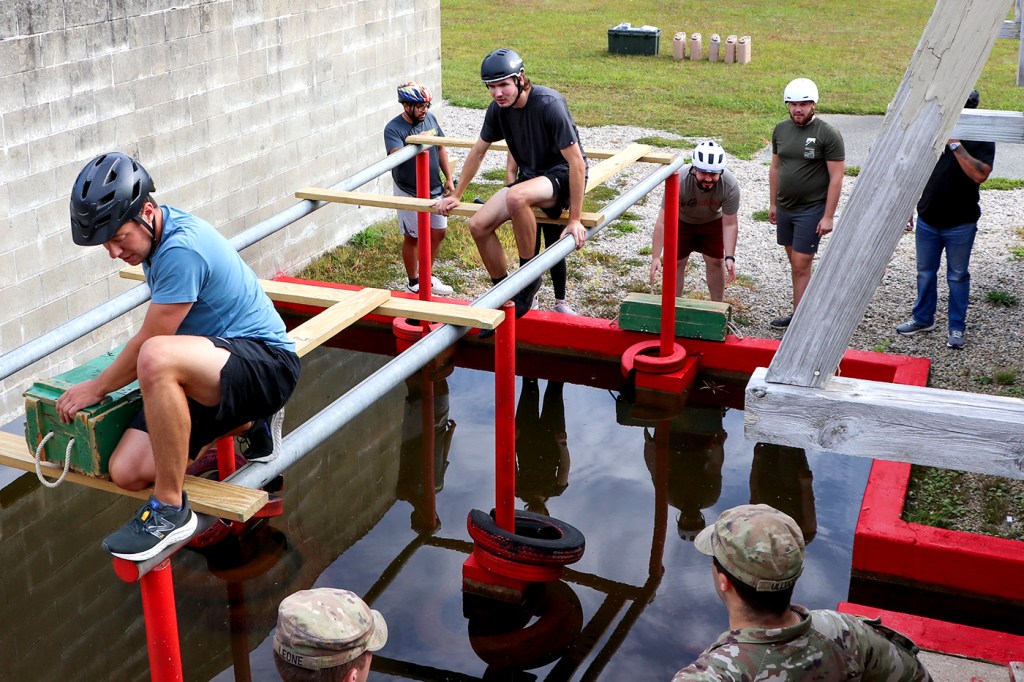
oto by Tamara Benitez
What happens when you tell a group of engineers to scale an 8-foot wooden wall and traverse an as-yet-unseen water challenge on the other side?
Plenty of splashing.
And teamwork.
It’s a word that Northeastern’s Gordon Institute of Engineering Leadership is dedicated to instilling in every new class of graduate students.
Team building is an integral part of the process of creating engineering leaders, said Mike Manning, professor of engineering leadership at the Gordon Institute. “We don’t do anything alone.”
Right or wrong, engineers are not exactly known for being social butterflies.
But it turns out that facing a series of physical obstacles created for military recruits is a fairly quick way to encourage small groups of people — engineers included — to work together.
“It’s an absolute accelerator in creating cohesive bonds,” Manning said.
It’s the reason why mechanical engineer Emma Barr found herself sitting high atop a stand-alone wooden wall on Joint Base Cape Cod on a recent Friday morning.
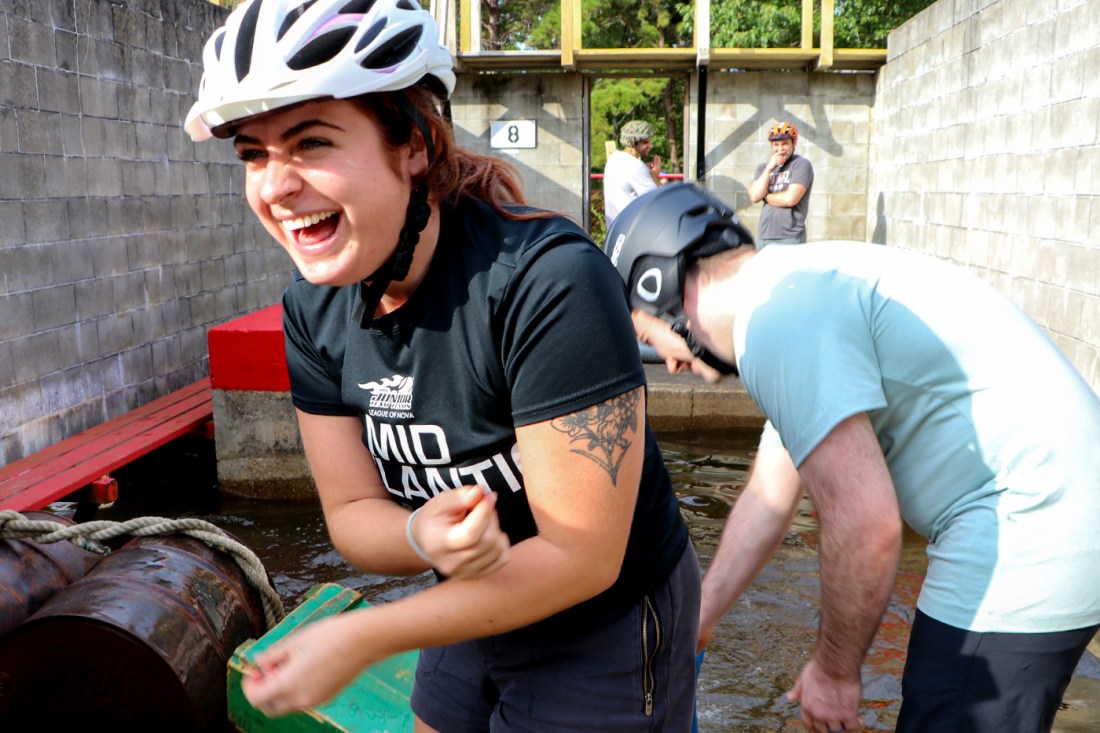
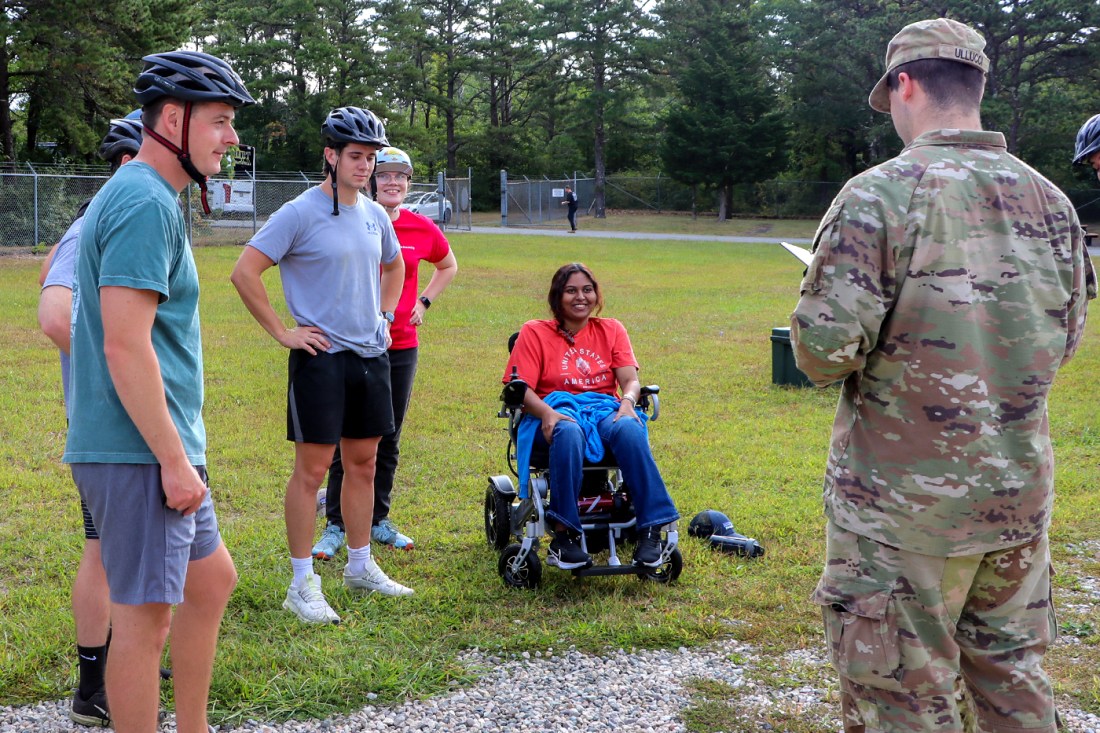
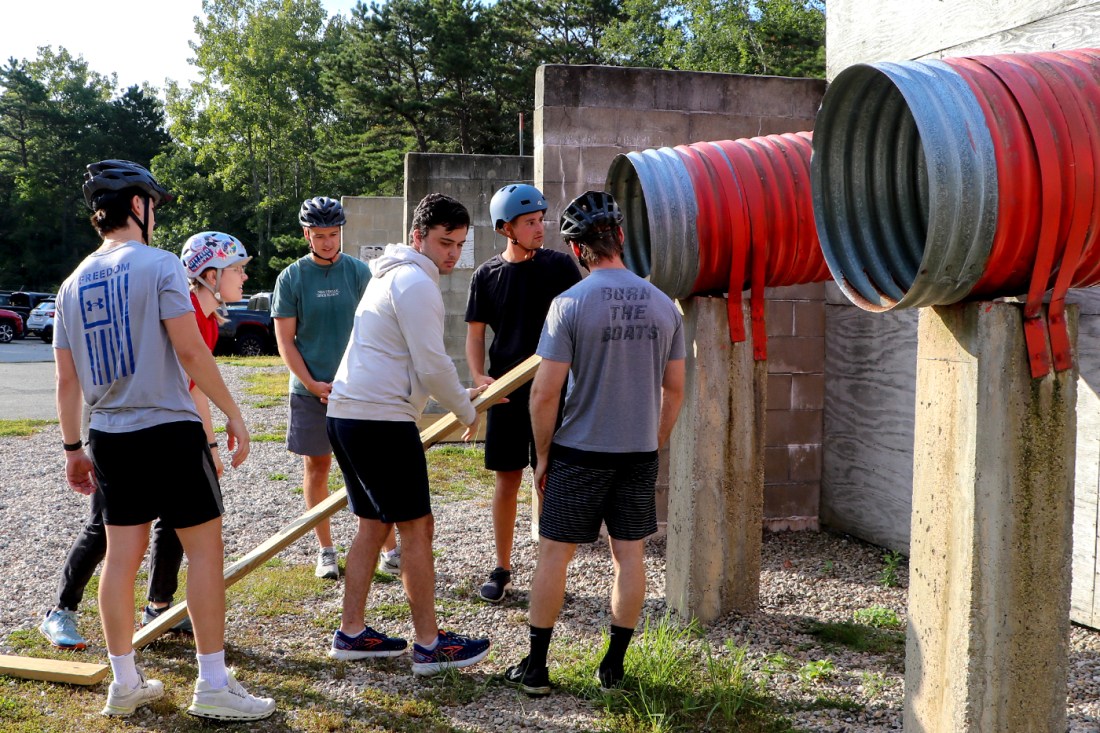
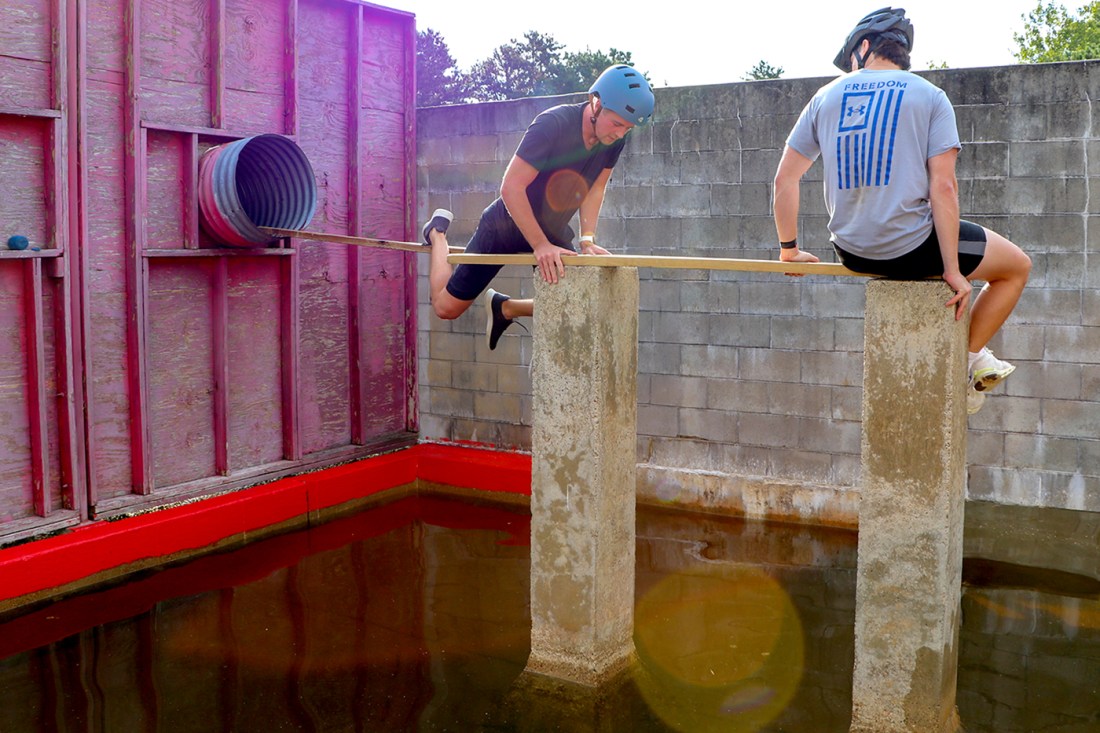
Photos by Tamara Benitez
Below was a patch of grass, which she wasn’t supposed to touch, next to a stagnant pool of water across which lay widely spaced horizontal cables, or rungs.
The goal was to somehow transport a rectangular wooden box, the type that holds ammunition, up and over the wall and across the water to the other side of the pool in about 15 minutes.
To a casual observer the task seemed nearly impossible.
And in fact the first team of seven Gordon Institute students to face it failed to complete it.
By the time Barr’s team approached the wall, it had already encountered other stations and started to work out what it meant to be a team — how long to allow for pre-planning and how to communicate strategies and identify strengths.
The team wisely chose Andrew “Drew” Ovshak, who is on the tall side, to climb over the wall and reach out with a long leg to pull the first rung of the cable to him with his foot.
“What do I do after that?” Ovshak asked.
“Lay down,” said team member Austin Breed, a chemical engineer and West Point graduate.
But how?
Editor’s Picks
The team encouraged Ovshak to do the type of “trust fall” they had practiced as a group the other day, but this time he would have to trust himself to fall safely across the cables.
Mission accomplished, Breed scrambled over him to form another face-down human bridge over the cables, which a third team member used to get to the other side.
Back at the wall, Dylan Danko hung from the top, dangling the empty ammo box on his foot. He held out his leg and Ovshak, who had rolled over onto his back, grabbed the box and passed it to Breed who handed it off to their third teammate.
“We got three people and the ammo across,” Barr said. She herself had dropped from the wall to the forbidden ground without making it to the cables and “human bridge” before the challenge was up.
“All my strength is in my legs,” not upper arms, she said.
Barr, however, had a superpower that she was able to employ to her team’s advantage on their last challenge, one that had plunged quite a few Gordon students into a pool of water at another station on the leadership reaction course.
But first Steven Klosterman, senior director of engineering leadership, talked about why Bernard M. Gordon, considered the father of high-speed, analog-to-digital conversion, used his funds to help create Northeastern’s Gordon Institute of Engineering Leadership in 2007.
Gordon, who is 97, was concerned that as engineers became ever more specialized, they increasingly handed over the reins of corporations and high-tech industries to financial experts and other professionals.
Communicating, writing well and operating on a cross-functional team were not being taught as before, and Gordon “was frustrated with that,” Klosterman said.
Programs like Northeastern’s Gordon Institute close the gaps between leadership and engineering expertise through training, technical coursework, one-on-one mentorship and an industry challenge project Manning calls “co-op on steroids,” he said.
Klosterman said the institute offers a certificate in engineering leadership with credits honored by all master’s degree programs in the College of Engineering and select programs in the Khoury College of Computer Science and the College of Science.
“It’s about coalescing a team of people around a complex or complicated problem, then endeavoring to solve that problem,” Manning said, pointing out that team members took turns being the leader during the leadership reaction course.
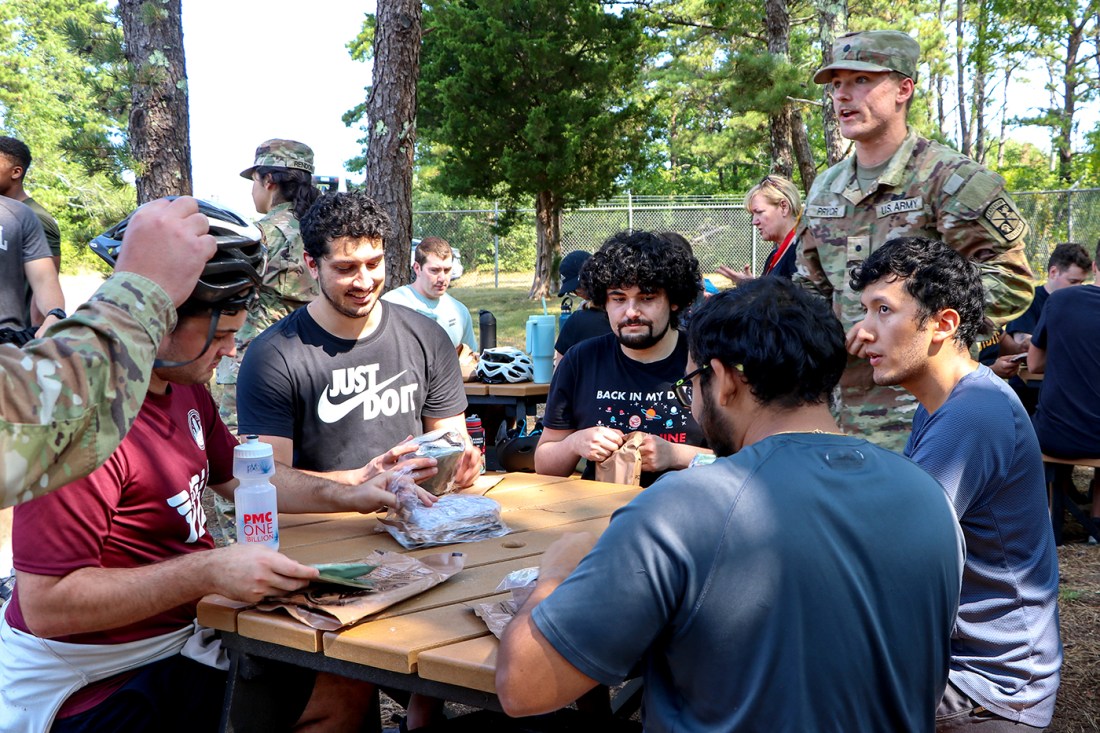
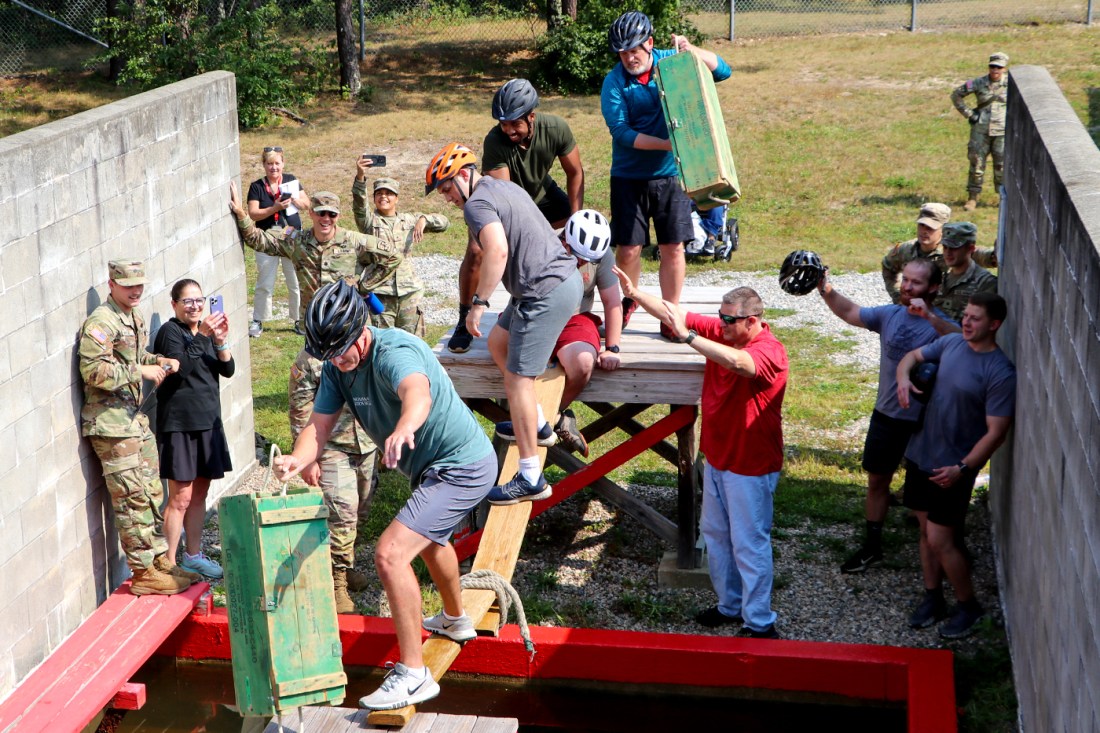
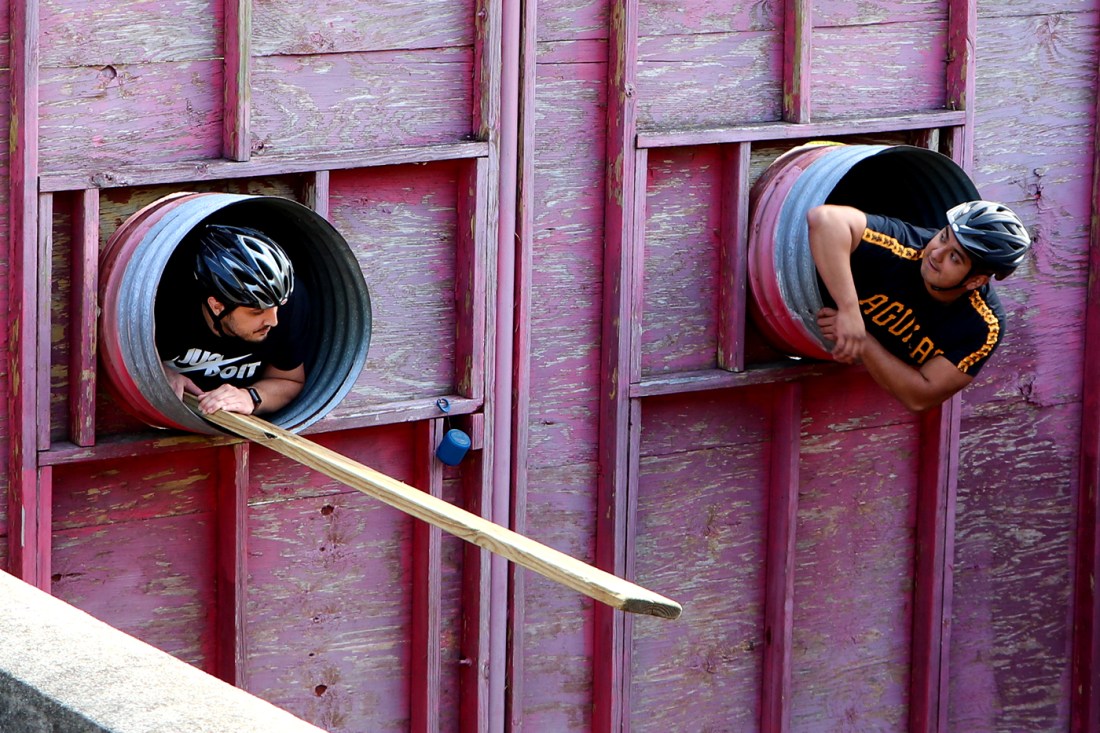
“They’re working through vulnerability and how to create a space where everybody on the team has an opportunity to use their voices,” Manning said. “All these skills are transferable in industry.”
Barr said she got it.
“Being a leader is about knowing each other’s strengths and then playing to them to make sure they put the best person in the position to be able to handle and complete that task,” she said.
For her team’s last challenge, group members roped together two 55-gallon drums that Barr used to float across the water to parallel pipes holding a two-by-four that had been set in place by another teammate.
Barr hoisted herself from the barrels onto the slender board on her stomach, then pulled herself to her knees.
While watching teammates held their breath, she pulled herself to her feet on the board that lay perpendicular to the two parallel pipes.
Then, to the cheers of observers, Barr leapt gracefully to the concrete pad on the other side of the pool.
“Mission accomplished!” said a cadet from the Providence College ROTC, part of a group of cadets who escorted the Gordon Institute students through the course and debriefed them after each station.
“I said, ‘I’ll go, because I have the balance,’” Barr said, revealing her superpower. “I did ballet.”





